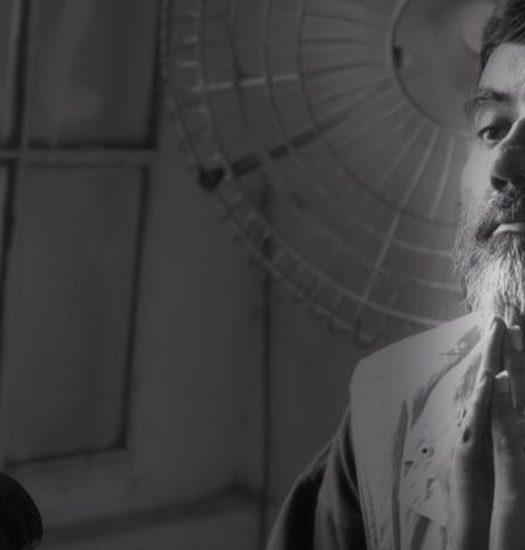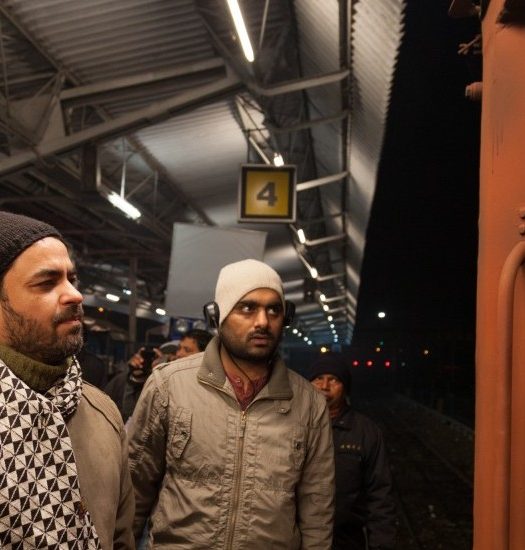The action in Kill Dil is very stylish – Sham Kaushal
When it comes to action, Sham Kaushal is a name to reckon with in the Hindi film industry. He has choreographed the incredible action sequences for several films including Krrish, Don, Kaminey, Om Shanti Om and several others.
The Action Director speaks to Pandolin about the highly stylish action in his latest film Kill Dil .

Sham Kaushal
How did your foray into action happen? Have you officially trained in the field?
I was born and brought up in Punjab and have done my MA in English literature. But I wasn’t able to find a job there and happened to come to Bombay in search of a job. The film industry was never on the agenda. I finally got a job but after a year of working I realized that a 9 to 5 job isn’t my cup of tea. I quit the job but I couldn’t go back to my village. Luckily it so happened that the place where I was staying in Santacruz had a lot of stunt men staying around me. They suggested that I should try for the job of a stuntman, as it would help earn some money. That made sense to me and that’s how I became a stunt man. I learnt a few things and in a few months started getting work. It wasn’t easy but I gave it a shot and as time went by I kept getting more work.
There is no official training that happens. The fight director has a team of his own and they keep practicing. So you practice with them and learn the basic things. Then once you start going for shootings you gradually learn on the job. You start understanding things even technically – how a sequence is designed and so on. It is all practical knowledge that no institute teaches you.
As an action director, what is the kind of equipment/tools that you have at your disposal?
There is no equipment as such. Your mind is the biggest tool because that is where you design things. Whenever you read a script and speak to the director about designing an action scene, you start visualizing it in your head. Then you rehearse it and convert those thoughts into action. There were no equipments initially but in the past decade or so, cables, harnesses etc. are being used which we call as per the requirement of the sequence.
How would you define the action of Kill Dil?
Kill Dil is basically a love story. The action is very stylish and is mainly in the songs where the characters are built up and their growth is shown. It is a mixture of songs and action but the action isn’t gory.
Take us through the process of creating a fight scene from rehearsal until filming.
Firstly when I come on board a film, the director’s narration is vital to me as he has been living with this film for much longer and concentrates on the entire film. I start visualizing the actions sequences as per the director and the story. The characters, the story presentation and how the action should thus be. Every film has a different demand for action so the action in no two films is alike. I then work on making those action sequences more interesting by adding my inputs and then discuss my ideas with the director. Once the movements in the sequence are locked I work on the storyboarding. I design the shot vision on paper and then call a storyboard artist who gives it a visual form. The storyboard is then shared with all departments. If there is a complicated situation, we previse it, meet the VFX team and give them the storyboard. The VFX team then converts it into an animated piece and a motion sequence is created which makes thing easier. Then comes the execution. If there is something that needs to be fine-tuned I first keep a rehearsal to work it out, in order to save time on the actual shoot day.
I shoot this rehearsal on my camera and also edit roughly. So it becomes like a sequence outline, a reference for the actual shoot. If we feel that the actor also needs to rehearse then they are called for it. The stuntman shows them the movements and we perfect those movements with the actors. So we have almost 70-80 per cent of the actual action already with us.
Then comes the actual shoot. Being Head of Department, you need to ensure that you take everyone in confidence. There is a lot of risk involved in our field, so you need to make people comfortable. If the actors are comfortable and know that they are safe they will be able to perform better. So my team and I workout the safety measures in detail. I’m privileged to have such a good team. It is not easy work and there have been moments, which are very challenging.

Since Ali is new to action, how did you go about training him?
I bonded very well with Ali. As an action director it is important to build a trust level with the actors. My stuntman first shows the stunt to the actor several times. Then gradually we get the actor to rehearse and get the stunt right. Physically and mentally you need to get the actor into the right zone. If the actor is not comfortable with any movements we simplify or change them.
How was the experience of working with Ranveer? Did he do everything on his own or have you’ll used body doubles?
Ranveer is like my son. He has worked with me on most films – Goliyon Ki Raaslela Ram-Leela, Gunday, Lootera etc. Ranveer’s energy levels are very high so I need to try and tone it down (laughs). It is always great to work with him.
In this movie neither Ranveer nor Ali have used a body double for even a single shot. They have done all the stunts themselves.
There is a sequence with Ali standing between two compartments of a running train. How did you go about this scene?
In this sequence Ali is standing between the compartments and he is holding a gun with both hands. We have used a wire harness, which locks his body from both sides to the train so that he doesn’t move. This is to ensure that even if there is a sudden movement he doesn’t fall off. We also had a stunt man sitting with the train driver to coordinate the speed. We first did an entire rehearsal with the stuntman and locked the sequence and then shot it with Ali.
Take us through the making of the bike chase sequence. Did you’ll actually blast a jeep for this?
As I mentioned that the action is very stylish and most of it happens during the songs. So the movements are very dramatic, hero-like. The toppling of the car and the blast are done in reality, we haven’t used any VFX. There is a mechanism wherein we use nitrogen gas and a piston that is fitted in the car. The piston first hits the ground and then throws the car upwards. We calculate the exact distance where the car is supposed to fall, as per the shot requirement and the blast is done accordingly. When you place the piston, you can decide the intensity of the blast, how many meters the car will topple and so on. It is all pre-calculated. For such shots we cannot have several rehearsals so we need to get it right in one go. And with experience you know how much gas needs to be filled for what kind of an outcome.
Any scenes where you have worked with a green screen?
This film didn’t involve much of VFX. We have largely shot everything live.



